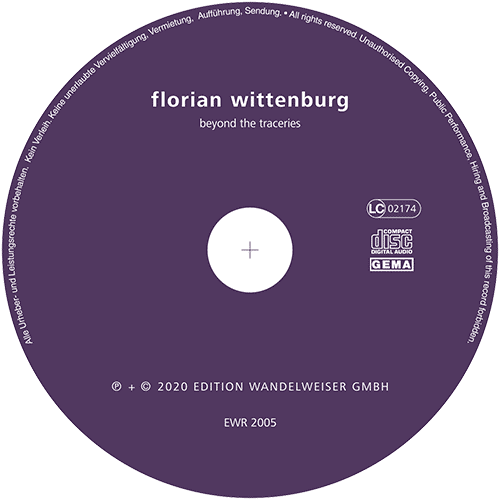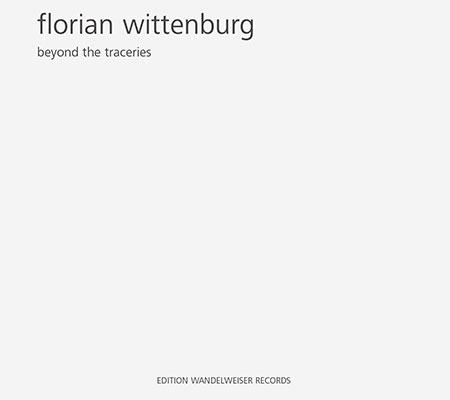EDITION WANDELWEISER RECORDS
> CD catalogue
>> florian wittenburg
_____________________________________________________________________
<< >>
florian wittenburg
beyond the traceries
| order reference: medium: composer: performer: |
EWR 2005 CD florian wittenburg electro-acoustic music |
 |
 |
| >> jazz bulletin (pdf) florian wittenburg beyond the traceries 1 beyond the traceries 2 moving thirds (take 1) 3 noise bowls (part 1) 4 of exile 5 moving thirds (take 2) 6 noise bowls (part 2) electro-acoustic music audio excerpt: ► beyond the traceries (06:06) ► noise bowls (part 1) (05:01) ► moving thirds (take 2) (03:27) beyond the traceries the english word “tracery” means a.o. “flechtwerk“ in german. one could call the programming structures which i construct for my electronic music ”flechtwerke“ - ”traceries“. however, the resulting music is more than these patches, more than just the algorithm. to a large extent the music depends on how you control it in real time. therefore i found beyond the traceries a fitting title for my new album. it is a phrase quoted from eric pankey's poem epitaph. it inspires the electronic manipulations in the same titled first piece on this album. in this piece it is the deformed language which results from this (time-)stretched phrase that forms white noise. to be more exact, the music results from interactions between two differently stretched phrases and the resulting shifting noise sounds, which permanently and constantly create different combinations. in the pieces called noise bowls the fundamentals and harmonics of two glass bowls - which are, as it were, infinitely changing (in time) - equally produce permanent new combinations. especially the rhythmical, almost infinitely varied interplay of fundamentals and harmonics for me keep these pieces very intruiging from begin- ning to end. the two vibraphone pieces called moving thirds are actually two different takes of the same piece and form the intermezzo between the previously mentioned meditative works. in these pieces, sort of moving thirds - hence the title - are characteristic for the applied harmonic language. in the first phrase it is a minor third, which moves through the chord, so that it first is at the bottom, than in the middle, and finally at the top. as a result a minor/major, a major and a augmented chord emerge. in the second phrase it is a major third, which moves through the chord in the same way and which results in a dominant, a minor and a diminished harmony. in the third phrase elements of these previously mentioned progressions are combined. |